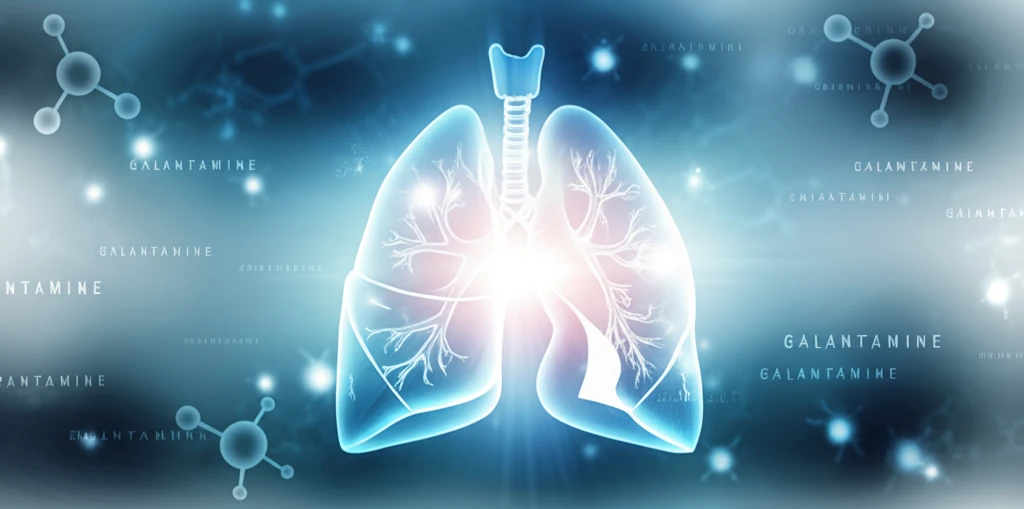
Breathe Easier: How Galantamine Could Protect Against Lung Damage
"New research explores how galantamine, a drug known for treating Alzheimer's, might offer a protective effect against acute respiratory distress syndrome (ARDS) caused by acid aspiration."
Acute respiratory distress syndrome (ARDS) is a serious condition where the lungs become severely inflamed, making it difficult to breathe. This inflammation damages the tiny air sacs in the lungs, called alveoli, and the capillaries surrounding them. As a result, fluid leaks into the lungs, leading to edema and a significant reduction in oxygen levels in the blood.
One of the causes of ARDS is aspiration pneumonitis, which occurs when foreign substances, such as stomach acid, are inhaled into the lungs. This is a dangerous condition that can quickly lead to severe lung injury and even death. Current treatments for ARDS are limited, highlighting the urgent need for new therapeutic strategies.
Recent research has focused on understanding the underlying mechanisms of ARDS, particularly the role of inflammation. Cytokines, small proteins that act as signaling molecules, are believed to play a crucial role in triggering and amplifying the inflammatory response in ARDS. Scientists are exploring different ways to modulate this cytokine response to reduce lung damage and improve patient outcomes.
Galantamine: An Unexpected Ally Against Lung Inflammation?

A new study published in the Tropical Journal of Pharmaceutical Research has explored the potential of galantamine, a drug commonly used to treat Alzheimer's disease, in protecting against acid aspiration-induced ARDS. The researchers hypothesized that galantamine's anti-inflammatory properties could help mitigate the damaging effects of ARDS in the lungs.
- Control group: Received no treatment.
- ARDS group: Exposed to acid aspiration to induce ARDS.
- Galantamine + ARDS group: Received galantamine prior to acid aspiration.
- Galantamine + ARDS + Methyllycaconitine (MLA) group: Received galantamine and MLA (a nicotinic receptor blocker) prior to acid aspiration.
- Galantamine + ARDS + Vagotomy (Vag) group: Underwent vagotomy (severing of the vagus nerve) and received galantamine prior to acid aspiration.
- Galantamine + ARDS + Atropine Sulfate (ATS) group: Received galantamine and atropine sulfate (a muscarinic receptor blocker) prior to acid aspiration.
A Promising Future for Respiratory Health?
The study's findings suggest that galantamine pretreatment can significantly reduce inflammation and lung damage in acid aspiration-induced ARDS. This protective effect appears to be mediated by the cholinergic anti-inflammatory pathway, a complex signaling system involving the vagus nerve and specific receptors in the lungs. While further research is needed to confirm these findings and explore the potential of galantamine in human patients, this study offers a promising new avenue for developing more effective treatments for ARDS and other respiratory conditions.
